Where Seattle's refugees come from and other things you should know
“Sincerely, if I told you the truth, you cannot achieve or reach your aim if you don’t struggle. So now, I’m struggling.”
Those are the words of Osman Mohamed, a refugee from Somalia who settled in Washington this year with his wife and three children. He grapples with past trauma and with moving forward in a new country.
We followed Mohamed's story and also those of Tu Tu from Myanmar (Burma) and an Iranian couple, Peiman Karimi and Neda Sharifi Khalafabadi, for their first eight months in the U.S.
These three countries have generated some of the most refugees to the state since 2010. Over this time period, Washington has taken in about 2,500 refugees every year.
We analyzed data from the U.S. Department of State for a snapshot of refugees in Washington.
While refugees still make up a small number of Washington’s booming population, new Census numbers indicated that immigration as whole is adding a considerable bump to the state.
Nearly 30 percent of the state’s recent population growth is from immigration. In the Seattle area, it’s even higher.
Coming to Washington
Since 2010, Washington state has brought in 16,504 refugees from 46 countries, ranking it 10th of all states in number of refugees.
Seventy-two percent of the state's refugees came from just five countries: Iraq, Myanmar, Somalia, Bhutan and Ukraine.
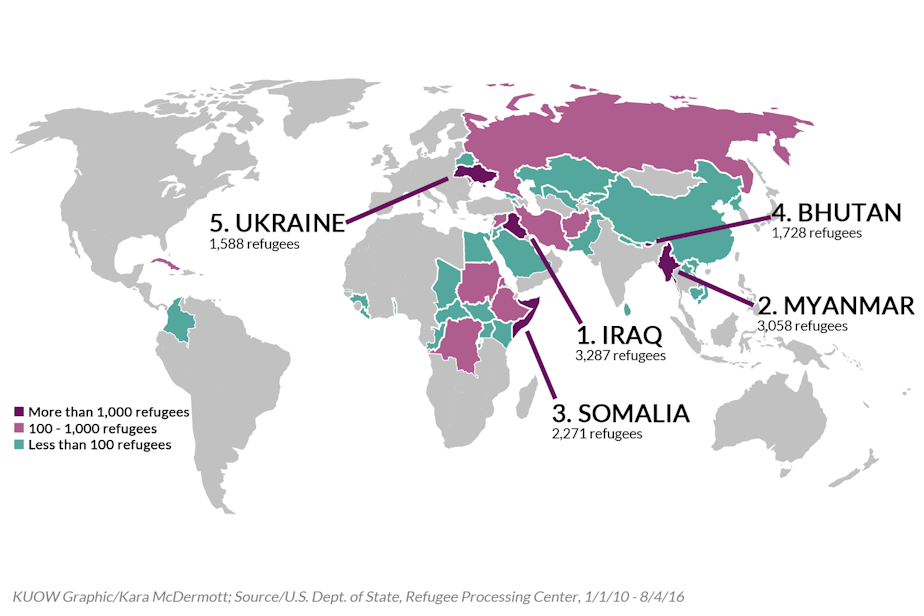
During the same time period, the U.S. (including Washington, D.C. and Puerto Rico) resettled 441,680 refugees.
Texas was the top-ranked state, bringing in 45,499 refugees from 64 countries. For perspective, the Lone Star state resettled almost as many refugees just from Myanmar — 14,928 — as Washington brought in from all countries during the same time period.
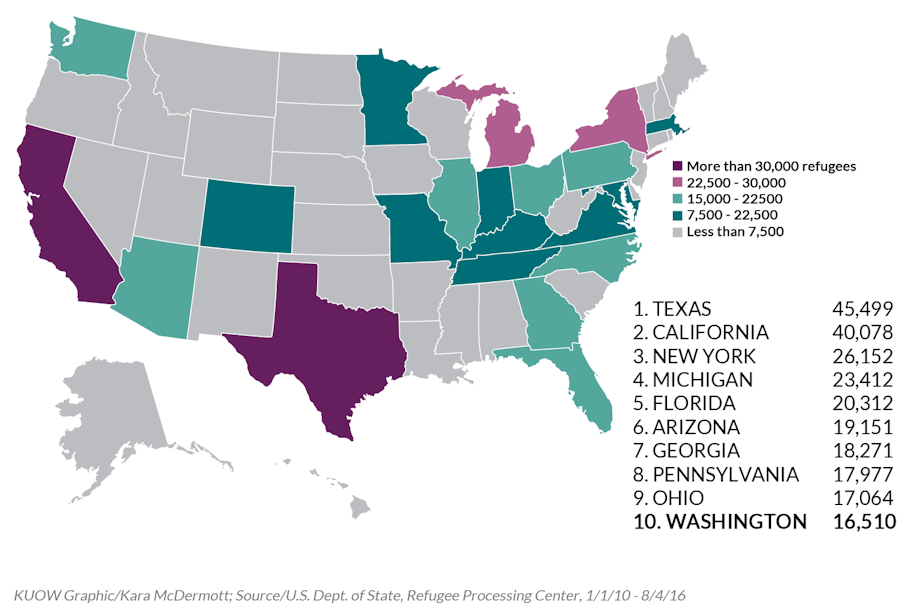
During the period we looked at, the highest number of refugees moved to Washington in 2010 and 2014, mirroring national trends. The state hit a low in 2011, bringing in less than 2,000 refugees for the year.
As of early August, Washington has brought in 1,787 refugees this year.
While Iraq and Myanmar accounted for many of Washington's refugees since 2010, their numbers have declined in the most recent years, replaced by a rise in refugees from Ukraine, which at 420 so far has the most refugees for this year.
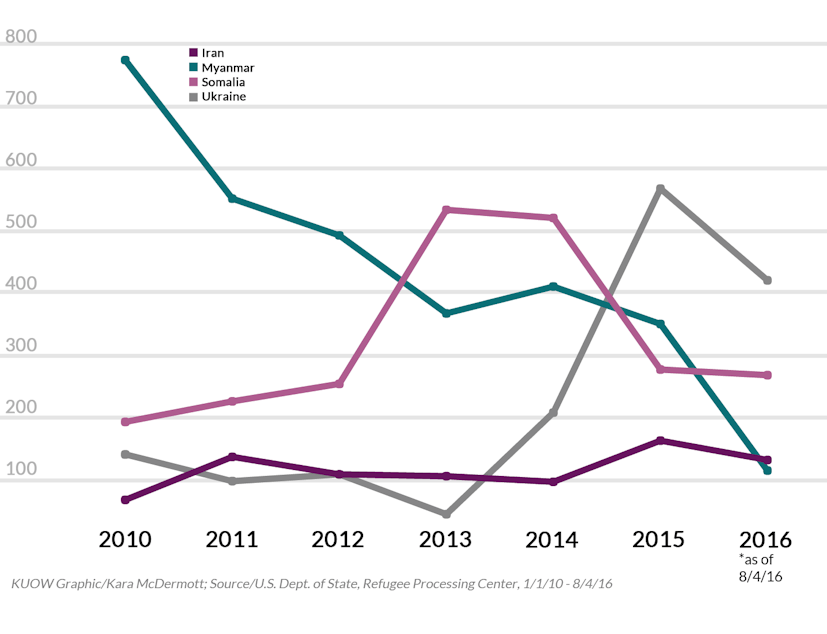
Settling In
Nearly two-thirds of Washington's refugees settled in King County. Eighteen percent landed in Spokane County. The others spread through the state.
Even though King County dominated, there wasn't much spillover up and down the Interstate 5 corridor. Pierce and Snohomish County each took just about 2 percent of the refugee population during this time period, buoyed by Tacoma and Everett.
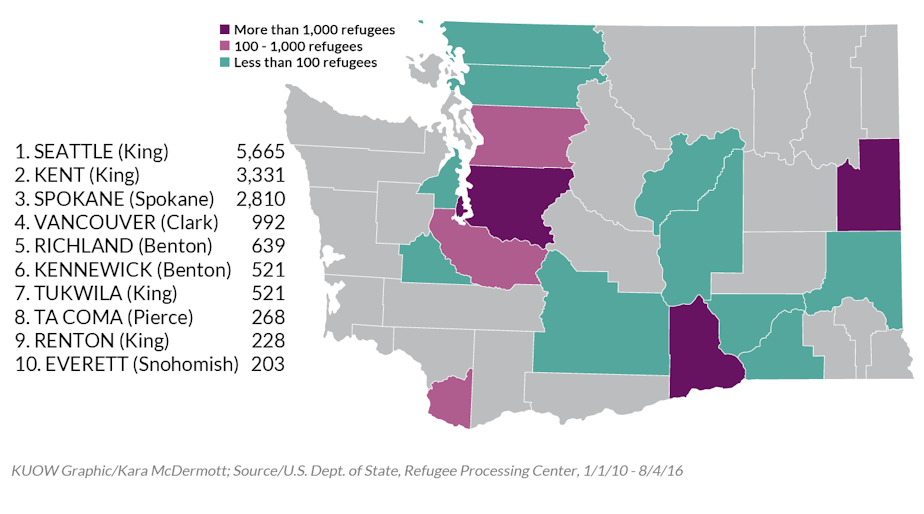
Language and Education
We also reviewed data and analysis from the Migration Policy Institute to get a snapshot of education and language skills for refugees coming to America from three countries we featured in our recent series: Iran, Myanmar and Somalia.
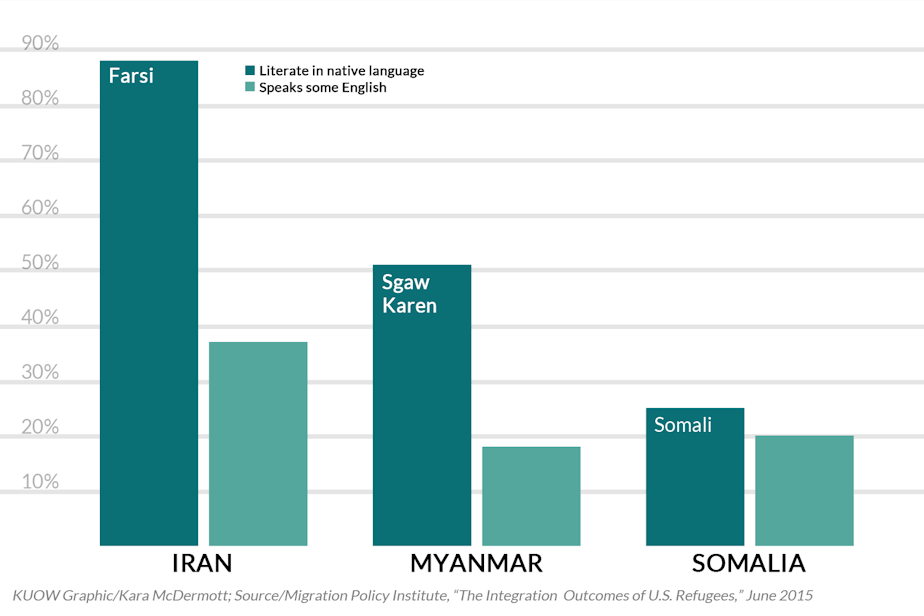
Those from Iran were more likely to be educated and have better language skills on first arrival.
This might be because those coming from Myanmar and Somalia were more likely to come from a refugee camp. Between 2002-2013, MPI reports that 59 percent of Burmese and 60 percent of Somali refugees came from a camp, like the two men we followed, Tu Tu and Mohamed.
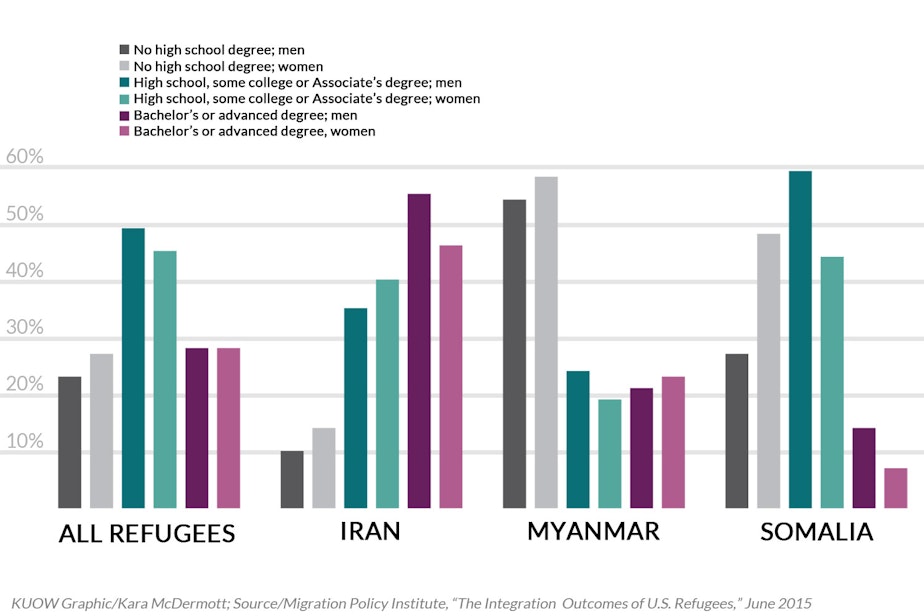
But those who moved to the U.S. as children have an advantage in the longer term. A report from MPI says that refugees who arrive as children have more opportunities than adults to get education and develop their English.
According to MPI, the majority of new refugees are of working age, 16-64. In 2013, the median was 25 years old.
Between 2009-2011, over half of Somali refugees were 20 years old or younger when they arrived. For Myanmar it was just under half.
Tu Tu was 20 when he arrived and celebrated his 21st birthday in his first months in the States. Osman Mohamed was 27. The Iranian couple we profiled, Peiman Karimi and Neda Sharifi Khalafabadi, were both close to 40.




